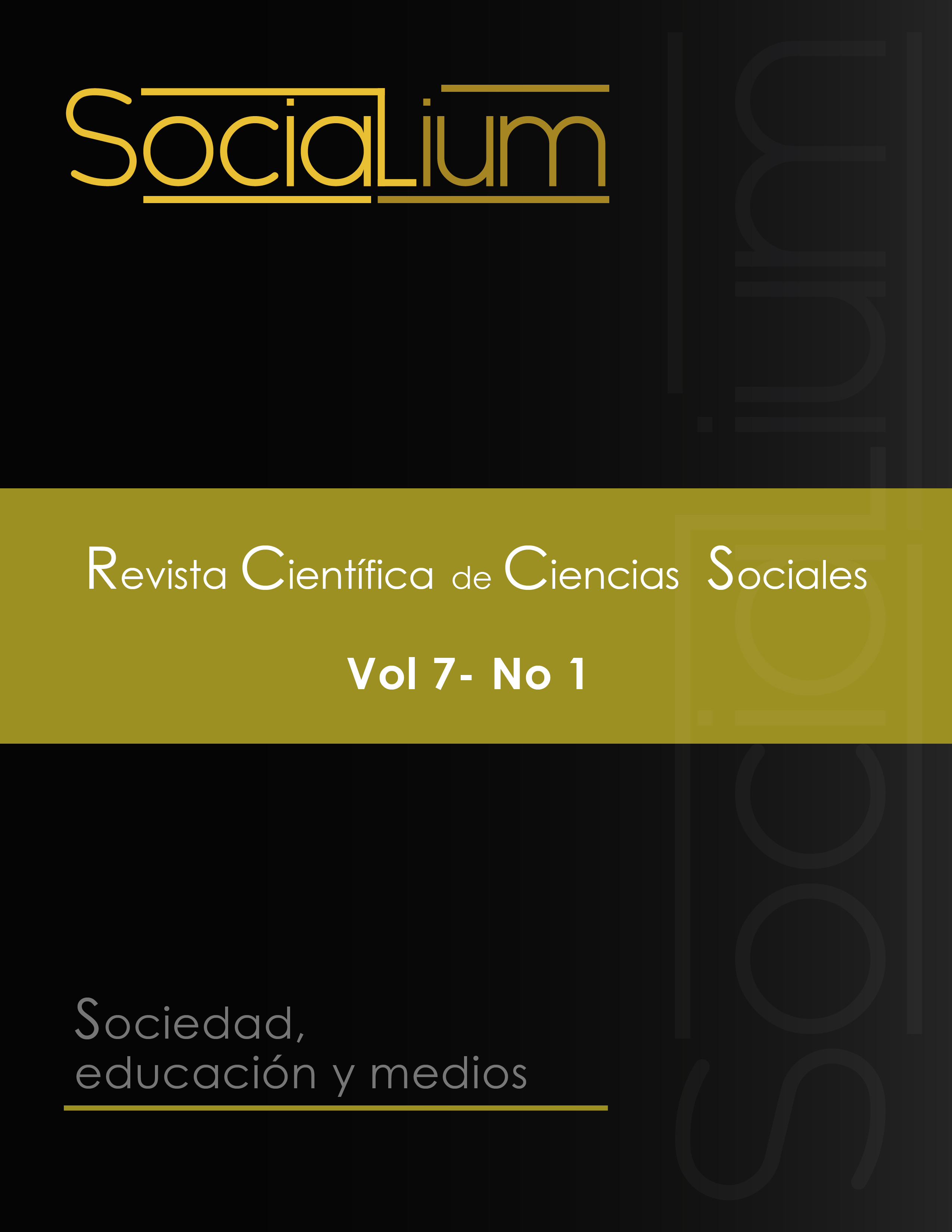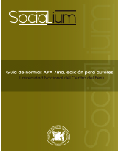Involucramiento político, un alcance conceptual desde la perspectiva de Bruce Pinkleton
DOI:
https://doi.org/10.26490/uncp.sl.2023.7.1.1694Palabras clave:
Involucramiento político, interés, política, búsqueda de información, participación políticaResumen
El objetivo de la investigación fue identificar los fundamentos del concepto involucramiento político según Bruce Pinkleton. Quien trabajó el término involucramiento político en quince (15) artículos académicos dentro del campo de estudio de la comunicación política. El estudio cualitativo de diseño fenomenológico tuvo como como unidad de análisis al profesor Bruce Pinkleton y la elección de (07) siete artículos de su producción científica como autor y coautor, como instrumento de recopilación de la información se aplicó una guía de entrevista semiestructurada y una ficha de registro y para el procesamiento de datos se aplicó una matriz de análisis. Como resultado se halló que el término involucramiento político se conceptualiza como el interés de un ciudadano en la política y la búsqueda de fuentes e información en medios de comunicación tradicional como la TV, radios, periódicos y redes sociales que favorezcan a la toma de decisiones y participación política.
Referencias
Austin, E. y Pinkleton, B. (1999). The Relation Between Media Content Evaluations and Political Disaffection. Mass Communication and Society, 2(3–4), 105–122. https://doi.org/10.1080/15205436.1999.9677867
Austin, E. W., van de Vord, R., Pinkleton, B. E., & Epstein, E. (2008). Celebrity endorsements and their potential to motivate young voters. Mass Communication and Society, 11(4), 420–436. https://doi.org/10.1080/15205430701866600
Cuillier, D., y Pinkleton, B. E. (2011). Suspicion and secrecy: Political attitudes and their relationship to support for freedom of information. Communication Law and Policy, 16(3), 227–254. https://doi.org/10.1080/10811680.2011.586302
Dirección Nacional de Educación y Formación ciudadana (DNEF). (Setiembre de 2022). Fondo Editorial del JNE.
Garramone, G., Atkin, C., Pinkleton, B. y Cole, R. T. (1990). Effects of Negative Political Advertising on the Political Process. Journal of Broadcasting & Electronic Media, 34(3), 299–311. https://doi.org/10.1080/08838159009386744
Gestión (16 de diciembre, 2020). El 81% de peruanos cree poco o nada de lo que se dice o publica en redes sociales. https://gestion.pe/tendencias/el-81-de-peruanos-cree-poco-o-nada-de-lo-que-se-dice-o-publica-en-redes-sociales-noticia/
Hutchens, M., Hmielowski, J., Pinkleton, B. E. y Beam, M. (2016). A Spiral of Skepticism? the Relationship between Citizens’ Involvement with Campaign Information to Their Skepticism and Political Knowledge. Journalism and Mass Communication Quarterly, 93(4), 1073–1090. https://doi.org/10.1177/1077699016654439
Muehling, D., Laczniak, R. y Craig, J. (1993). Defining, operationalizing, and using involvement in advertising research: A review. Journal of Current Issues and Research in Advertising, 15(1), 21–57. https://doi.org/10.1080/10641734.1993.10504994
Lee, H. (2020). Voters’ involvement, attitude, and confidence in the era of new media. Palgrave Communications, 6(1), 1-7. https://doi.org/10.1057/s41599-019-0368-9
Oficina Nacional de Procesos Electorales, (ONPE). (07 de octubre,2022). Presentación de resultados. https://resultadoserm2022.onpe.gob.pe/ERM2022/EleccionesRegionales/ReGobVic/190000/190100/0
Pinkleton, B. (1997). The effects of negative comparative political advertising on candidate evaluations and advertising evaluations: An exploration. Journal of Advertising, 26(1), 19–29. https://doi.org/10.1080/00913367.1997.10673515
Pinkleton, B. (1998). Effects of Print Comparative Political Advertising on Political Decision-Making and Participation. In Journal of Communication.
Pinkleton, B. y Austin, E. (2001). Individual Motivations, Perceived Media Importance, and Political Disaffection, Political Communication, 18(3), 321–334. https://doi.org/10.1080/10584600152400365
Pinkleton, B., Austin, E. y Fortman, K. (1998). Relationships of media use and political disaffection to political efficacy and voting behavior. Journal of Broadcasting and Electronic Media, 42(1), 34–49. https://doi.org/10.1080/08838159809364433
Pinkleton, B., Austin, E., Zhou, Y., Willoughby, J. y Reiser, M. (2012). Perceptions of news media, external efficacy, and public affairs apathy in political decision making and disaffection. In Journalism and Mass Communication Quarterly, 18(1), 23–39. https://doi.org/10.1177/1077699011428586
Pinkleton, B., Um, N. y Austin, E. (2002). An exploration of the effects of negative political advertising on political decision making. Journal of Advertising, 31(1), 13–25. https://doi.org/10.1080/00913367.2002.10673657
Radio Programas del Perú (RPP). (11 de enero, 2022). Índice de participación ciudadana en el Perú está por debajo del promedio latinoamericano. https://rpp.pe/campanas/valor-compartido/indice-de-participacion-ciudadana-en-el-peru-esta-por-debajo-del-promedio-latinoamericano-noticia-1380079?ref=rpp
Reagan, J., Pinkleton, B., Thornsen, A., Miller, M., y Main, J. (1998). Motivations as predictors of information source perceptions: traditional media and new technologies.
Rothschild, M. (1978) Political Advertising: A Neglected Policy Issue in Marketing. Journal of Marketing Research, 15(1), 58-71. https://doi.org/10.2307/3150401
Yoon, K., Pinkleton, B. y Ko, W. (2005). Effects of Negative Political Advertising on Voting Intention: An Exploration of the Roles of Involvement and Source Credibility in the Development of Voter Cynicism. Journal of Marketing Communications, 11(2), 95–112. https://doi.org/10.1080/1352726042000315423
Zaichkowsky, J. (1986). Conceptualizing Involvement. Journal of Advertising, 15(2),4-14. DOI:10.1080/00913367.1986.10672999
Zhou, Y. y Pinkleton, B. (2012). Modeling the Effects of Political Information Source Use and Online Expression on Young Adults’ Political Efficacy. Mass Communication and Society, 15(6), 813–830. https://doi.org/10.1080/15205436.2011.622064
Publicado
Número
Sección
Licencia
Derechos de autor 2023 Isabel Valdivieso Añazco

Esta obra está bajo una licencia internacional Creative Commons Atribución 4.0.








.jpg)
















